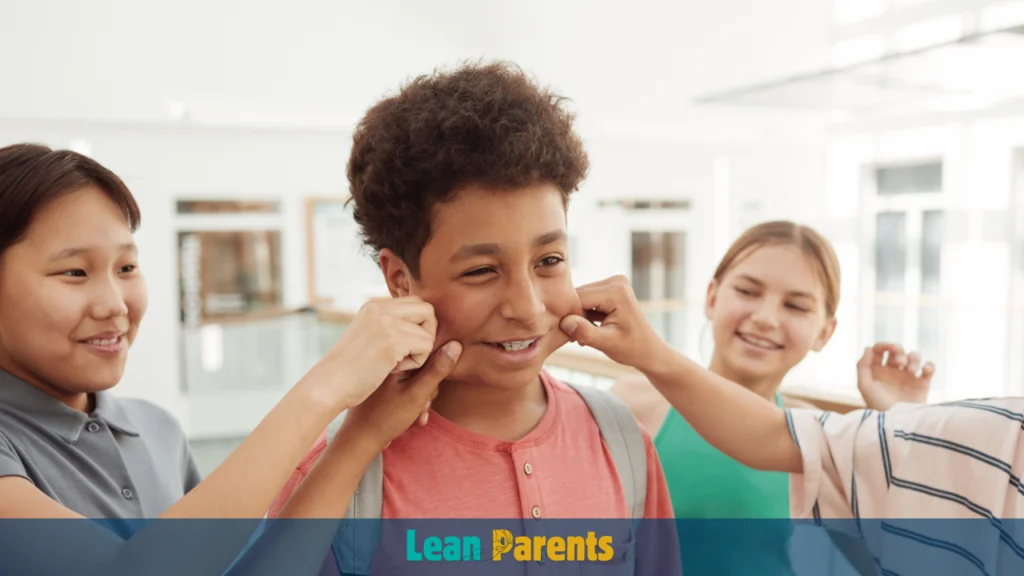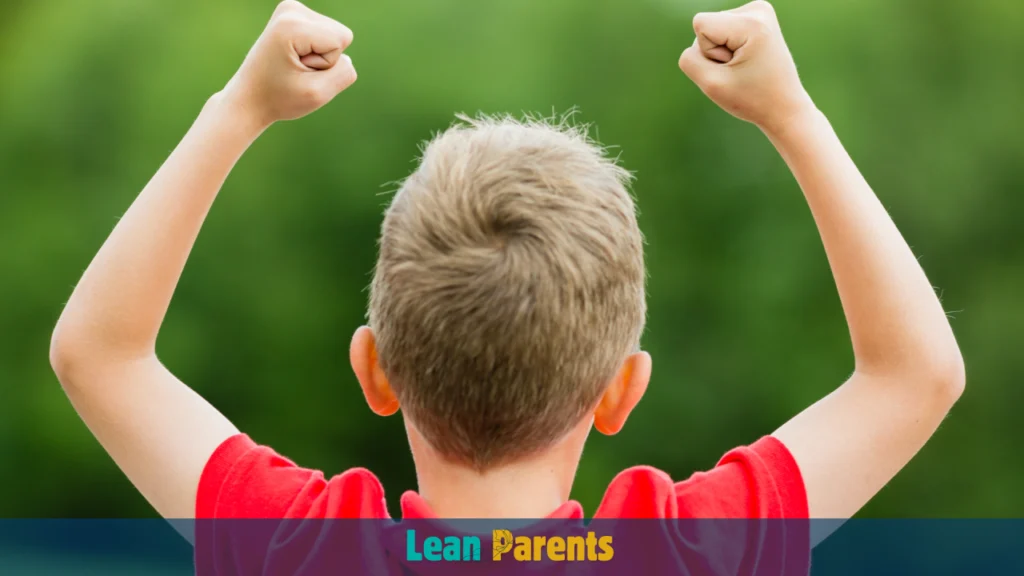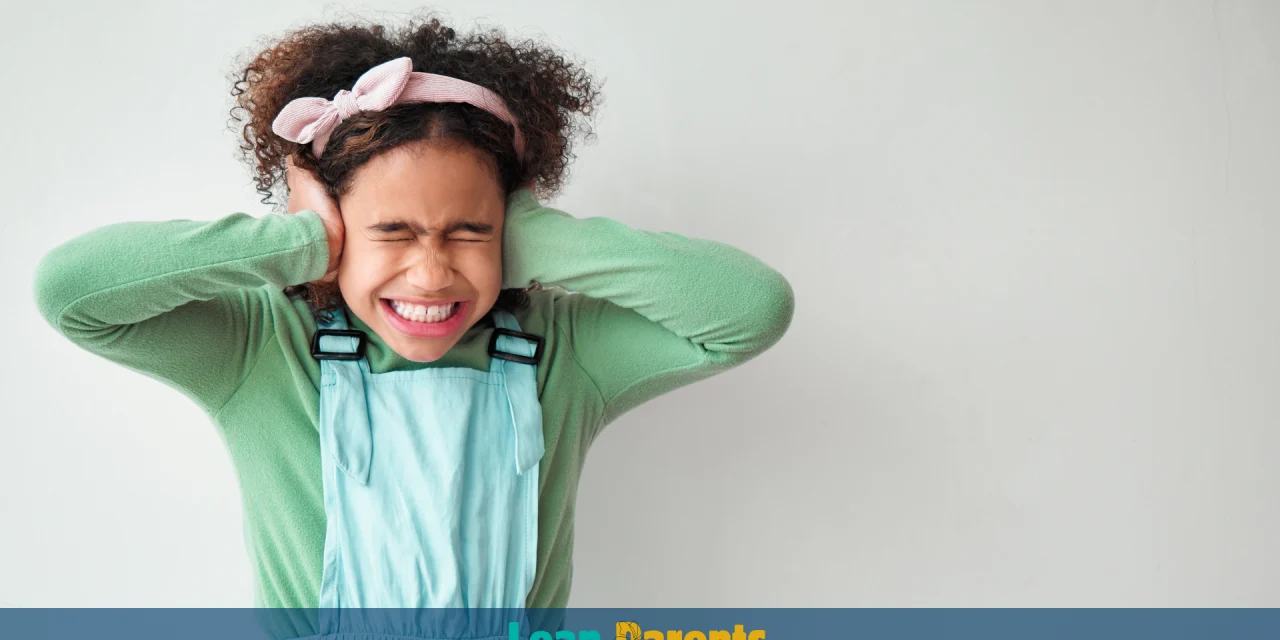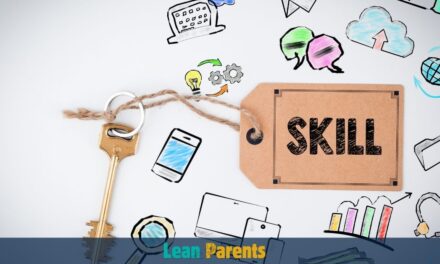As a parent, worrying about your child falling under negative peer pressure is common. The teenage years are especially tough, as kids seek acceptance from their friends. This can lead them to lose sight of their own values and well-being. Peer pressure affects kids of all ages, but it’s more intense around 12, when they start to value their peers’ opinions more1.
Seeing your child face peer pressure can be tough, but remember, you can help them. By talking openly, boosting their self-confidence, and teaching them how to say no, you can help them deal with peer pressure. This way, your child can grow up to be confident and strong2.
Key Takeaways
- Peer pressure can influence children of all ages, but becomes more significant around age 12.
- Some kids give in to peer pressure to be liked, fit in, or due to curiosity about others’ actions2.
- Having a friend to support and say “No” with you can diminish the influence of peer pressure2.
- Parents can help combat peer pressure by being involved, encouraging independence, and teaching refusal skills1.
- Building strong relationships with children is key to countering negative peer pressure3.
Understanding What Peer Pressure Really Is
Peer pressure is a strong force that affects kids and teens. It’s when people of the same age group influence each other. This can change how they think, believe, and act4. It’s important for parents to know how it works and help their kids deal with it.
Defining Peer Pressure in Simple Terms
Peer pressure is wanting to be like others to fit in and feel accepted5. It can be as simple as a suggestion or as strong as a demand. It plays a big role in how kids make choices.
Different Types of Peer Influence
Peer influence can be good or bad. Good influences might push for doing well in school or staying healthy. Bad influences might push for things like using drugs, driving recklessly, or being too young to have sex5. Knowing the difference helps parents guide their kids better.
Why Children are Susceptible to Peer Pressure
Kids and teens are easily swayed by their friends because they’re still growing6. They want to be independent and accepted, making them more open to bad influences4. Parents are key in helping them make good choices.
Understanding peer pressure helps parents support their kids better5. Teaching kids how to resist bad influences helps them make better choices. This leads to a happier and healthier life for them.
The Impact of Negative Peer Pressure on Children

Peer pressure can deeply affect children, especially during their teenage years. It can lead to risky behaviors like substance abuse and skipping school. It can also cause bullying and cheating.
The need to fit in can push vulnerable kids towards unhealthy choices. This can harm their mental health, leading to depression, anxiety, and even suicidal thoughts. For more information, visit this link.
Social media and online games can make these problems worse. Kids are exposed to unrealistic images and may act out in virtual worlds. This can hurt their social, emotional, and academic growth.
It’s important to spot early signs of peer pressure. Look for changes in behavior, mood, and who they hang out with. Talking openly, building strong relationships, and teaching refusal skills can help.
Understanding peer pressure is key for parents, teachers, and communities. It helps us support and empower kids during their teenage years. By tackling this issue, we can raise confident, responsible kids who handle peer influence well.
Recognizing Early Signs of Peer Pressure in Your Child
As parents, it’s key to watch for early signs of peer pressure in your child. Spotting these signs early lets you offer the right support and guidance during tough times.
Behavioral Changes to Watch For
One sign is when your child suddenly doesn’t want to do school stuff anymore. This might mean they’re spending more time with friends than studying. This can hurt their grades and future plans7.
They might also stop doing things they love to fit in with their friends. This can happen when they feel pressured to do what others want7.
Emotional Indicators
Peer pressure can make your child feel sad, insecure, or even depressed. They might feel like they’re not good enough because of what their friends think7.
It can also cause stress and anxiety. This stress might keep them up at night, hurting their health7.
Social Pattern Shifts
About 70%-90% of pre-teens and teens let their friends influence their choices. This includes what they wear and even risky behaviors like smoking or sex8.
Peer influence, whether good or bad, shapes their actions. They want to feel accepted and valued by their friends8.
Knowing the warning signs of bad peer influence is important. Look out for long-lasting sadness, aggression, sleep or eating problems, or not wanting to go to school. These signs can help you support your child’s mental health8.
Spotting these early signs is vital. It helps both kids and adults provide the right support during tough times78.
Building Strong Parent-Child Communication
Creating open communication between parents and kids is key to fighting negative peer pressure. Parents should listen carefully without interrupting, even when kids share upsetting news9. This makes kids feel safe to talk more in the future9.
Asking open-ended questions about their day helps build strong family bonds10. Knowing their friends, school activities, and online life is also important10.
Parents are very important in their kids’ lives, even when they’re teenagers10. Feedback from Positive Parenting Malta and the Office of the Commissioner for Children shows how important it is for parents to reflect and regulate themselves9. This helps in talking about peer pressure with their kids9.
It’s also important to talk to teachers. This helps kids make good choices and stand up for their rights9.
| Key Factors for Strong Parent-Child Communication | Benefits |
|---|---|
| Providing a safe space, empathy, positive values, and encouragement | Equips children with resilience against negative peer pressure9 |
| Promoting positive risk-taking and self-esteem | Helps teens resist negative peer influence10 |
| Maintaining emotional connection and involvement | Leads to better decision-making and choices for teens10 |
By supporting open communication, parents can help their kids deal with peer pressure. This way, kids can make smart, ethical choices910.
Teaching Your Child Effective Refusal Skills
Teaching your child to say “no” is key to keeping them safe from bad peer pressure. By learning to say “no” with confidence, they can handle tough social situations better. Let’s look at ways to teach them this important skill.
Role-playing Scenarios
Role-playing is a great way to teach your child about peer pressure. Practice saying “no” to things like alcohol or risky behavior. This boosts their confidence and prepares them for real-life situations.11
Developing Confident Responses
Teach your child different ways to say “no” with confidence. Talk about the importance of eye contact and a firm voice. Encourage them to have a few confident responses ready, like “No, I don’t want to do that.” These tools help them resist bad influence.11
Creating Escape Plans
Having a plan to leave a situation can help avoid peer pressure. Teach your child to use a “code word” to signal you if they’re uncomfortable. Make sure they know it’s okay to leave and prioritize their safety.11
By using these strategies, your child will learn to handle peer pressure better. They’ll develop the skills needed to make good choices. Remember, the goal is to empower them, not just protect them, so they can grow into confident individuals.
| Substance | Prevalence among American Youth |
|---|---|
| Alcohol | According to the Substance Abuse and Mental Health Services Administration (SAMHSA), alcohol is reported as the most commonly misused substance among American youth12. A recent study indicated that approximately 6,200 adolescents start drinking alcohol each day, highlighting the prevalence of underage drinking among young people12. Research by the American Academy of Pediatrics revealed that 80% of teenagers perceive their parents to be the most significant influence on their decision regarding alcohol consumption, emphasizing the crucial role of parental guidance in preventing underage drinking12. |
The article stresses the need for children to learn refusal skills to resist peer pressure. It shows that having strategies can help teens avoid risky situations12.
Strengthening Your Child’s Self-Esteem

Building your child’s self-esteem is key to helping them deal with peer pressure. Research shows that peer pressure is common in childhood and can start early13. By boosting their self-image and confidence, you empower them to make their own choices and stand up for what they believe.
One way to build self-esteem is by celebrating your child’s wins. Celebrating their achievements boosts their pride and self-esteem13. Encourage them to follow their interests and give them chances to succeed. This can help them resist negative peer pressure.
It’s also important to praise and support your child. Praising them for good choices helps them trust their judgment13. By always acknowledging their positive actions, you help them feel valued and brave enough to face negative influences.
Talking openly with your child is another key strategy. Talking openly can help them seek advice when faced with peer pressure14. A supportive environment lets them trust you enough to share their struggles and get your help.
Role-playing can also teach your child how to handle peer pressure. It’s a way to practice different situations13. This helps them build confidence and assertiveness to resist negative peer influence.
In the end, by boosting your child’s self-esteem and teaching them to make their own choices, you prepare them for peer pressure. Children with high self-esteem are less likely to seek approval from others and more likely to stick to their beliefs14. This strong sense of self-worth will help them through the ups and downs of growing up.
The Role of Family Values in Resisting Peer Pressure
As kids grow up, family values are key in fighting off bad peer pressure. Research shows that15 friends become more important during teen years. And16 kids of all ages face pressure to act badly. But, families with clear rules, traditions, and expectations help kids make good choices and stay true to their values.
Establishing Clear Family Rules
Having clear rules is vital in guiding kids through peer pressure16. Kids who like themselves and have friends with similar values resist bad influences better. Parents can help by setting clear rules and consequences, guiding kids to make choices that match the family’s values.
Creating Meaningful Family Traditions
Family traditions and rituals strengthen the bond between parents and kids15. They create a sense of belonging and security. Open communication, even in disagreements, makes these relationships closer. These shared experiences give kids a strong base to resist bad peer pressure.
Maintaining Consistent Expectations
Being consistent is crucial in teaching family values15. Teens have many friends, and16 parents play a big role in helping them deal with peer pressure. Clear and steady expectations help kids understand what’s expected of them and make choices that reflect the family’s values.
By valuing family, parents can help kids stand up to bad peer pressure and face teen challenges with confidence15. Good ways to handle peer pressure include boosting self-esteem, encouraging diverse friendships, and teaching decision-making skills. These are all things families can support.
Monitoring and Guiding Social Relationships
As parents, it’s key to be involved in your child’s social life17. Research shows that kids who are liked by their classmates do better than those who aren’t17. Good social skills from an early age help kids stay in school and have healthy relationships17.
Positive parental involvement boosts young children’s social skills17. Parents can help by organizing social events and showing good social behavior.
Get to know your child’s friends and their families18. Peer influence is when someone acts differently because of their friends18. This can be positive or negative18.
Peer influence makes friends more alike18. Teens often choose friends who are similar to them18.
19 A study with 4,877 adolescents found that family meals are important19. They help strengthen the bond between parents and kids19. Family meals also help prevent bad behaviors like substance use and violence19.
19 Talking to parents and being monitored are key to avoiding substance use19. Long-term studies show that monitoring helps kids avoid risky behaviors19. It keeps them safe from substance use and other problems19.
Be careful about where your child stays overnight18. Peer pressure can be strong in these situations18. Early teens are more likely to follow their friends, but this changes as they get older18.
17 Middle school kids often face bullying17. Teens deal with social and identity issues as they get older17. They tend to find a middle ground between what their peers and parents want17.
| Key Factors in Monitoring and Guiding Social Relationships | Description |
|---|---|
| Knowing Your Child’s Friends | Get to know your child’s friends and their families to understand their influences. |
| Parental Monitoring | Monitor your child’s activities, both in-person and online, to identify potential risks. |
| Fostering Positive Friendships | Guide your child towards positive friendships and make it difficult to spend time with negative influences. |
| Creating a Welcoming Home | Encourage your child to invite friends over, making your home a welcoming place for positive peer interactions. |
| Monitoring Overnight Stays | Be cautious about where you allow your child to spend the night, as these situations can involve intense peer pressure. |
Digital Age Challenges and Peer Pressure
The digital age has made peer pressure more complex. Kids today face more pressure from social media, online games, and virtual chats. Parents need to learn about these digital spaces to help their kids.
Social Media Influence
Social media has made teens seek validation more than ever before20. 45% of teens feel they must go to events or do things because of FOMO20. Parents should watch their kids’ online actions and talk about the dangers of digital pressure.
Online Gaming Pressure
Online gaming has also introduced new peer pressure. Trends and challenges have led to a 25% increase in teens taking risks without thinking20. Parents should set rules for internet use and teach kids about being responsible online.
Virtual Communication Challenges
Virtual chats can also lead to peer pressure. 60% of teens say social media influences their choices,20 and 70% find it hard to tell when social media is pressuring them20. Parents should talk openly about how virtual chats affect their kids.
In today’s world, cyberbullying, digital safety, and online peer pressure are big worries for parents. By knowing what’s going on, setting limits, and talking openly, parents can help their kids deal with digital challenges and resist bad influences.
The digital age makes it hard to resist the urge to fit in, often seen on social media21. People feel bad or want to change themselves to fit in, which can hurt their values21.
It’s easier to bully or harass online because of the internet’s anonymity21. Teenagers might engage in cyberbullying, sexting, FOMO, social comparison, online disinhibition, or internet addiction21.
To tackle these issues, getting help from trusted adults and mental health experts is key21. Also, setting limits on screen time is important21. The education system today might not prepare kids for the future, so teaching real-life skills is crucial21.
By knowing about digital age challenges and peer pressure, parents can help their kids handle the modern world better2021.
Creating a Supportive Home Environment
Children face many challenges, especially with peer pressure. The family should be a safe place where they feel loved and supported22. By creating a welcoming home, parents help their kids resist bad influences and find positive ones22.
Talking openly is crucial. Make sure your child feels heard and understood without fear22. Make them feel they belong and are valued in the family22. Find the right balance between giving them space and watching over them.
Also, be the example you want your child to follow22. Show them what it means to have good relationships and handle problems well22. This way, you teach them important values that help them deal with peer pressure.
| Positive Peer Pressure | Negative Peer Pressure |
|---|---|
| Aligns with an individual’s moral code and encourages healthy behaviors22. | Leads to behaviors that do not align with an individual’s belief system or values22. |
| Can positively impact children by helping them build confidence, individuality, and identity22. | May result in withdrawal, changes in sleep patterns, aggression, depression, and difficulty managing emotions22. |
| Caregivers can support children by observing actively, asking non-judgmental questions, and encouraging healthy behaviors22. | Caregivers should encourage healthy, supportive friendships to help children deal with peer pressure effectively22. |
By building a supportive home, you help your child face peer pressure with confidence22. This foundation helps them grow and develop in many ways.
“The family is the first school of human values, where we learn to live in harmony with others.” – Pope John Paul II
Creating a supportive family, ensuring emotional security, and practicing positive parenting are key22. These actions help children thrive and resist bad peer influences22.
Fostering Healthy Peer Relationships
Positive peer relationships are key for a child’s growth. Peer relationships in adolescence can boost self-esteem, social skills, and school performance23. As a parent, guiding your child to make healthy friendships is vital.
Identifying Positive Influences
Encourage your child to be around peers who are kind, honest, and grow personally. Adolescents may find friends who are supportive, competitive, or, each with its own effects23. Teach your child to choose friends who value the same things as your family.
Encouraging Beneficial Friendships
Positive friendships can make adolescents more resilient and confident23. Get your child involved in team sports, community service, or clubs they’re interested in. These activities help them learn important skills like talking, solving problems, and understanding others.
Managing Challenging Relationships
Adolescence can be tough, and your child may face tough peer situations. They might feel pressure to fit in or fear being rejected24. Teach them to set limits, speak up for themselves, and make smart choices. If needed, consider counseling to help them deal with these issues.
Professional help, like counseling, can really help teens improve their social lives23. Therapies like Cognitive Behavioral Therapy (CBT), Dialectical Behavior Therapy (DBT), and Acceptance and Commitment Therapy (ACT) can help them manage feelings and talk better23.
Helping your child build strong friendships is essential for their social and emotional growth. By finding good friends, supporting positive relationships, and handling tough situations, you can help them grow into a well-adjusted adult.
The Power of Positive Role Models
Introducing your child to positive role models can greatly shape their character. These inspirational figures can be family members, teachers, or community leaders. They show qualities like integrity, resilience, and compassion25.
Talk to your child about the good qualities of these role models. Encourage them to act like these positive examples. Also, teach them to be role models themselves, showing good decision-making and leadership26.
- Find mentorship chances for your child to meet inspiring people.
- Help your child find inspirational figures in school or community groups.
- Have talks about the character development of these role models. Explain how your child can adopt these traits.
Surrounding your child with positive influences helps them grow morally and stay strong25. These connections can make your child want to help others and make a difference.
| Positive Role Model Characteristics | How They Influence Character Development |
|---|---|
| Integrity | Shows the value of honesty, ethical choices, and trust. |
| Resilience | Encourages perseverance, flexibility, and facing challenges. |
| Compassion | Teaches empathy, kindness, and helping others. |
| Leadership | Builds confidence, communication, and inspiring others. |
“A mentor is someone who allows you to see the hope inside yourself.” – Oprah Winfrey
By showing your child positive role models, you help them grow strong and become inspirational figures themselves2526.
When to Seek Professional Help
If peer pressure is causing your child a lot of stress or leading to bad behaviors, it’s time to get help. School counselors, therapists, or child psychologists can offer great advice and support27. Look out for signs like sulking, withdrawal, or changes in sleep or appetite. These could mean your child needs professional help27.
Being proactive and seeking help shows you care deeply about your child’s well-being28. Peer pressure can push teens to do risky things. For example, 40% of teens might try drugs or alcohol because of it28. Also, about 30% of teens might feel anxious or depressed because of bad peer influence28.
Teenagers often take risks because of their friends and feelings29. Peer pressure can make them skip school, steal, cheat, bully, or use drugs29. If they can’t handle it, they might become victims of bullying. About 20% of teens who face negative peer pressure get bullied28.
Getting professional counseling, mental health support, or professional intervention can help your child deal with peer pressure. It’s important to remember that your child’s happiness and safety come first. Asking for help shows you’re a caring and responsible parent.
Building Resilience Against Future Challenges
Teaching your child to be resilient is key to handling peer pressure. By teaching coping strategies and learning from past experiences, you help them make better decisions. Resilience skills can be learned, showing how vital it is for kids and teens to manage stress and uncertainty30.
Encourage your child to think about their past experiences with peer pressure. Talk about what worked and what they’d change next time. This helps them learn more about themselves and grow, seeing challenges as chances for growth30.
Help your child make decisions by involving them in choices. Discuss the outcomes of their actions. Setting goals and helping them achieve them builds resilience and perseverance30. Also, having a supportive adult in their life is crucial for building resilience31.
FAQ
What is peer pressure?
How does peer pressure impact children?
What are the early signs of peer pressure in children?
How can parents help their children combat peer pressure?
How can parents teach their children effective refusal skills?
What role do family values play in resisting peer pressure?
How can parents monitor and guide their child’s social relationships?
What are the challenges of peer pressure in the digital age?
When should parents seek professional help for their child’s peer pressure issues?
How can parents help their children build resilience against future peer pressure challenges?
Source Links
- 14 Ways to Help Kids Combat Peer Pressure
- How to Handle Peer Pressure (for Kids)
- Helping Your Child Resist Peer Pressure – FamilyLife – A Cru Ministry
- Peer Pressure Takes a Toll on Mental Health—Here’s How to Deal
- Peer Pressure (for Teens)
- Peer Pressure
- 5 Warning Signs of Peer Pressure Behavior | Behavioral Health in New Jersey – Prasada In Home
- Peer pressure or influence: pre-teens and teenagers
- I love my children more than anything else in the world, but sometimes I feel a great anger … What is this? And what can I do about it?
- Parenting SA – Peer pressure
- Top Refusal Skills for Teens: How to Say No Under Pressure — McMillen Health
- 6 Refusal Skills for Teens: How to Say NO Without Saying No – Talk It Out
- How to Help Your Child Handle Peer Pressure
- 9 Ways to Teach Children How to Handle Peer Pressure
- Friendships, Peer Influence, and Peer Pressure During the Teen Years
- Helping Your Child Deal with Peer Pressure – familydoctor.org
- How to help kids navigate friendships and peer relationships
- Toward understanding the functions of peer influence: A summary and synthesis of recent empirical research
- How Can Peer Group Influence the Behavior of Adolescents: Explanatory Model
- Navigating peer pressure in the digital age.
- Navigating peer pressure and relationships in the digital age.
- Peer Pressure: Positive & Negative Impacts
- Peer Relationships in Adolescence – Horizon Services
- Empowering Youth: Engaging Peer Pressure Activities for Building Healthy Relationships | Everyday Speech
- The Power of Peers
- Encourage positive peer pressure
- Peer Pressures Impact on Teen Mental Health
- Coping Strategies for Peer Pressure: When Friends Gang Up on You | Everyday Speech
- Understanding Peer Pressure
- Resilience guide for parents and teachers
- Resilience





